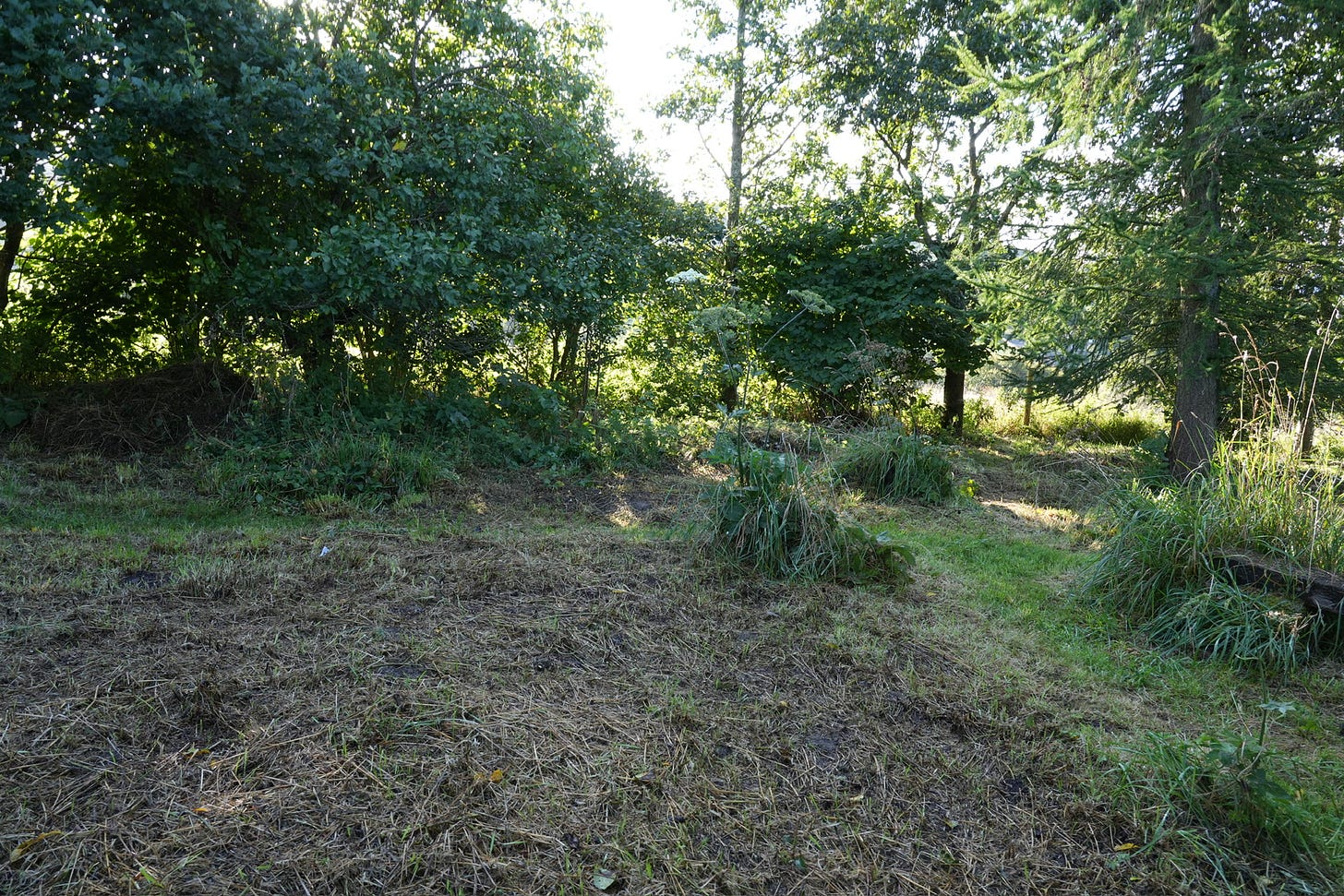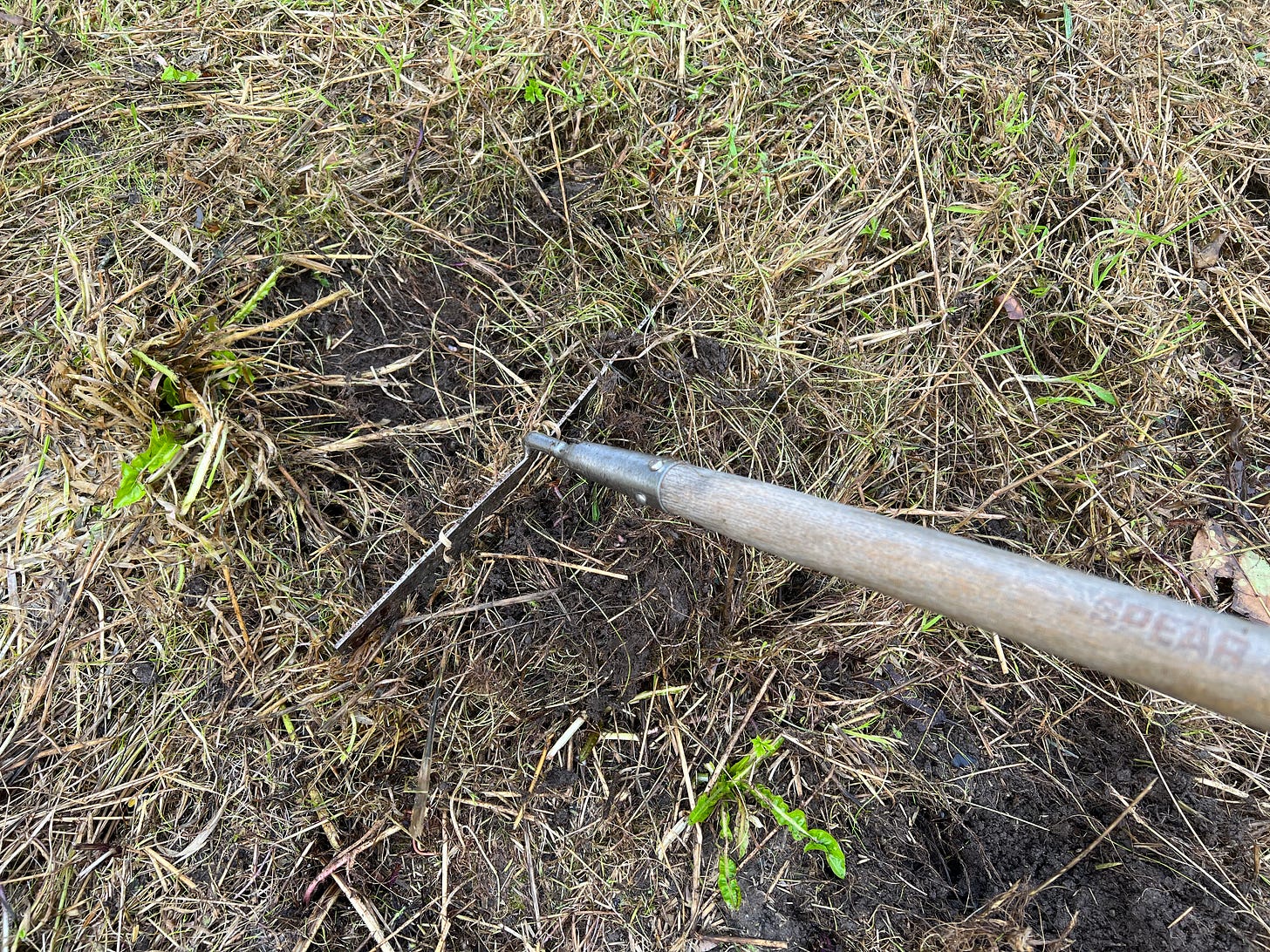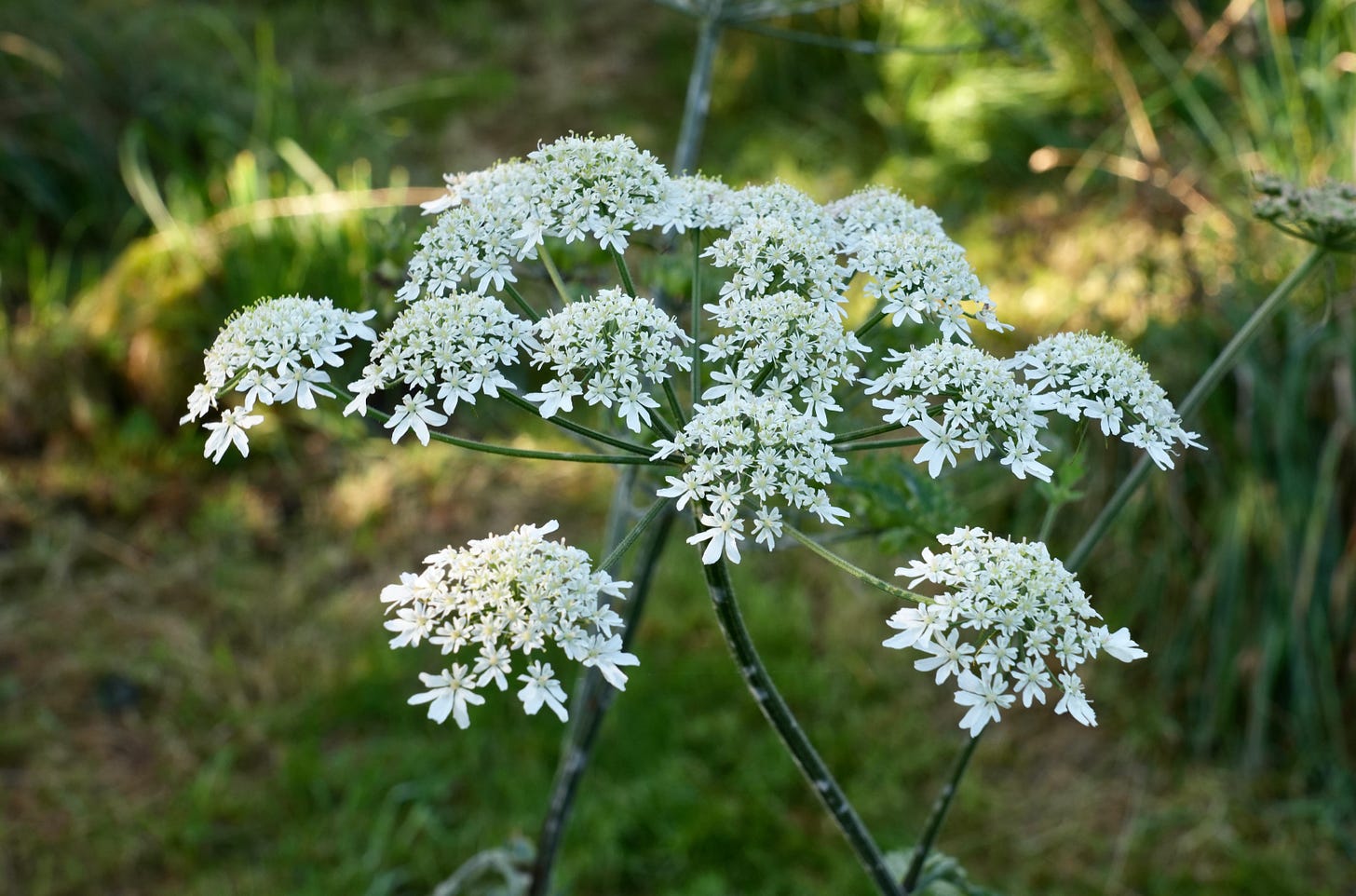In our wilder garden I’ve cut back the meadow grass areas and some of the shadier spots that were full of nettles and wild raspberry in an attempt to improve these spots next year. If you are growing a small area as a meadow, autumn into winter is the important time to do this for next year. Follow this wild way of gardening and mimic the large herbivores that used to eat back grasslands before winter.
The main two reasons for cutting and clearing dead material from areas you want as meadow grassland are to reduce nutrients and to allow light in. Dead material can blanket the ground shading out patches.
Wild Way of clearing long grass
STEP ONE: I strimmed the area, though a scythe or shears could also work (I hope to switch to a scythe when I have the pocket money!) I carefully strimmed about 2ft above ground level to make sure I didn’t hit any hiding hedgehogs or other animals.
STEP TWO: when I could see into each area to be sure they were clear of wildlife, I then mowed everywhere with the collection box on. This took ages because the volume of material is huge, involving many trips to the compost heap and turning the mower off and on a lot (tedious I’m afraid). This compost won’t be usable due to the number of grass seeds in it - it’s a challenge to know where to put these heaps, so I just squash them into shady spots out the way where it doesn’t matter.
STEP THREE: I left everything else for a few days to dry off, and then raked off all squashed dead material. This is often called thatch, but let’s just call it dead material. Raking can look quite brutal, and takes a lot of effort, it can expose areas of soil, try to stop at that point and not disturb the soil too much. This is good if you want to add more wildflower seeds, which I am doing from wildflowers across the farm.
STEP FOUR: once cleared with the rake, I will continue to mow on a low setting, removing the clippings, until everything stops growing as we head into winter. It’s a warm year this year, so grass is still growing a lot. I expect it will stop some time in October when it can be left until next year.

Our mini meadow area is pretty small, the size of a medium sized suburban garden. The volume of grass material it can produce however is huge, with two large compost heaps. It’s surrounded by trees producing deep shade, allowing for a mix of habitats.
Although I have cut back some nettles and wild raspberry, I do want to keep these in areas for wildlife. However, they have grown out of hand in this year’s wet summer, swamping everything and stinging us a lot! So a bit of controlling will allow me to increase plant diversity here to support more wildlife, and make it less painful to care for everything. Apart from existing daffodils for spring, I am only adding local wildflower seeds here.
Although I’ve focussed on our main garden a lot to date, this area is one of the most important areas of the farm because it will clearly demonstrate principles of gardening the wild way. Managing a wildflower ecosystem as a whole rather than focussing on individual plants. Please come back next year to see how it evolves.








Really interested to see how this goes for you. We have a similar issue with raspberries growing rampantly! I didn't know they were good for nature though.... They don't produce many if any raspberries